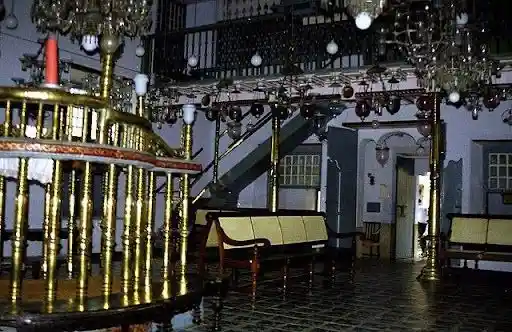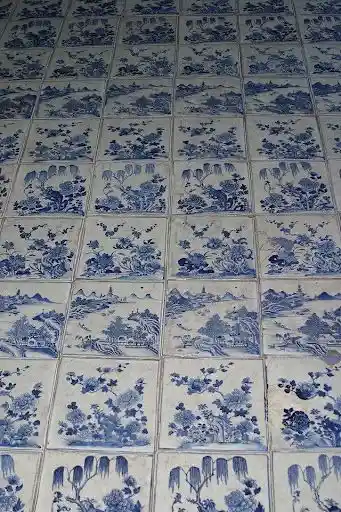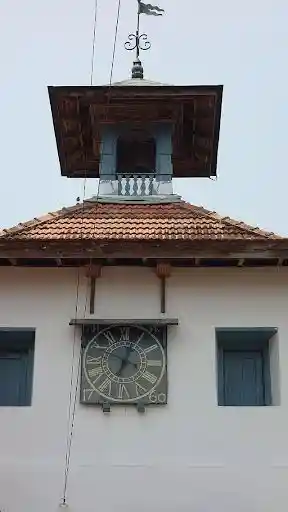Paradesi Synagogue for the Malabar Jews
India is known for its temporality. From the beginning, it has served as a home for many religions and communities. One such religion is Judaism. Surprisingly, the Jewish population in India is the fourth largest among other Asian countries. They owned their identity and merged with the natives of the country, carving a permanent place for them. They built temples to worship and this story talks about one of the Jewish temples in India.

Source: Wikimedia Commons The interior of the Paradesi Synagogue
If you think that they came via sea, you are right. Those days, as there was no other way other than the sea route for migration, these Jews in 562 BC came to the Cranganore, Cochin, as traders. Many different Jews came in as exiles to the port of Kochi, in 70AD. When the Hebrew King Solomon was in power, it was at that time trading of ivories, spices, wood, monkeys, and peacocks was at its peak in Cochin.
One among those migrated Jews are the Paradesi Jews, who were the descendants of the Sepharadim or Sephardic Jews who were expelled from Spain. In 1568, they built a synagogue, Paradesi Synagogue, one of India's oldest and unbelievably earliest synagogues. It is located in the Mattancherry sub-urban of Cochin. Samuel Castiel, David Belila, and Joseph Levi were the chief people behind the establishment of this antique synagogue.
Though the synagogue belongs to the Jews, doesn’t the word Paradesi sound like an Indian-originated word? Indeed, it is. The word ‘Paradesi’ means foreigner. It is substantial to note that King Rama Varma has given the land to the Jews which is adjacent to the Mattancherry Palace temple. In the world of religious warfares, it is our duty to honour the king who had such a heart that beats for the welfare of his whole country, not for his people alone.
Among all the other seven synagogues, Paradesi is the only one that is still in use. When you step into the Paradesi synagogue you witness the traditional touch of many cultures that came in by trade. This Jewish temple has been built in an awesome combination of Indian, Chinese, European, and Middle Eastern designs, that made this stand out of the box. This synagogue stands as evidence of the early arrival and settlement of the Jews in India as well as a way to the introduction to Jewish culture and heritage.
As every worship place has its holy book, a synagogue has its Torah. The compound is decorated with rich and old antiques that were received from all over the world. The majestic Belgian glass chandeliers that umbrellas your head, the 10th-century copper plates with Old Malayalam inscriptions, the brass railed pulpit that carries the look of a chariot, and a definite mention of the incredible hand-painted porcelain Chinese tiles.
The exquisite handmade tiles are imported from Canton in China by Ezekiel Rahabi in 1762. About 1100 in number, these tiles are in willow pattern which are of four repetitive designs. These designs are the representation of a famous and great love story.
Another story behind the embodiment of these tiles in the synagogue is different. These tiles were imported to embellish the palace of the king of Cochin. But a shrewd jew put the thought into the mind of the king that those tiles were made with various components including the cow’s blood. As the cow was a sacred animal to the king, he told this to his Jew friend and he took all those tiles which are now beautifully sitting on the floors of the Paradesi synagogue.
This rectangular divine place is white-walled, secured with wrought-iron gates, and the David star had catalyst beauty. Another notable antiquity is the tower clock, which has numerals in four languages: Hebrew, Roman, Arabic, and Malayalam. Synagogues should be visited barefoot.
This Paradesi Synagogue is open for visitors and tourists except on Fridays, Saturdays, and Sundays and also during Jews holidays. Men, do not forget to wear shirts and trousers; women should wear skirts below knee length. As we have the priest, the Jews have the Rabbi. With this unique and ancient synagogue, Cochin has become an area for the Jews, the Jews of Malabar.

Source: Wikimedia Commons The tiles inside the Synagogue

Source: Wikimedia Commons The clock tower at Paradesi Synagogue


